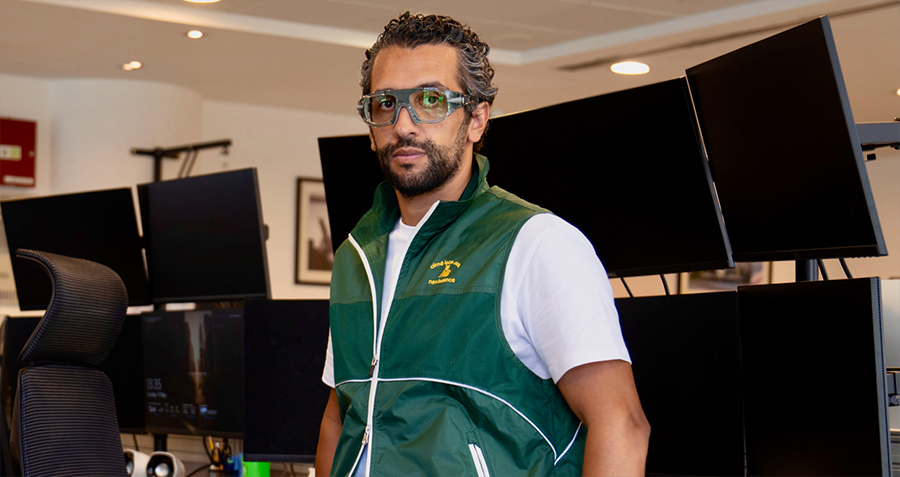In a business context, agility is the ability of an organization to rapidly adapt to market and environmental changes in a productive and cost effective way. This concept of business agility is a relatively recent phenomenon, but one which has become increasingly popular in businesses across a wide range of sectors over the past two decades. However, it is not necessarily a simple process to do, especially at scale.
In this interview Chris James, CEO of Scaled Agile, Inc., discusses the development of business agility, the need for both leadership buy-in and bottom-up training for effective implementation of processes, and the cultural challenges of adopting agility solutions in different regions around the world.
Q. To what degree have the requirements for a business to remain agile changed over the past decade?
A. For the US and parts of Europe, it all really started with the creation of the Agile Manifesto [a statement of principles that support agile software development, agile methodologies and agile project management] in 2001. That began to drive the agenda for agility at the team level, which worked well and various tools like Scrum were widely adopted by startups and others to really disrupt the larger companies, Apple disrupting Blackberry for example.
Seeing this, the largest companies in the world started to ask, well why can’t we have a similar agility at scale? Which is something that SAFe has been doing for over 10 years now. Of course, demands on these large companies to maintain their market share and leadership have also risen, and there has been a lot of uncertainty across a number of business contexts, so the need for resilience and the ability for organizations to adapt has been important. This has resulted in a doubling down on agility at scale.
Q. What are the current challenges and opportunities in the global market?
A. Where we see a lot of growth is, for example, in the automotive industry. The sector is going through tremendous change in multiple ways, while they still value hardware and mechanical engineering, they’ve come to have to adopt software engineering as a new capability required to produce competitive products. And this has permeated not just through the original equipment manufacturers, but also their suppliers and the tier two suppliers and so on, so we see the whole supply chain starting to adopt these new ways of working around SAFe, so they can speed up the work flow.
Another example is government agencies, many of which have suffered from being hierarchical or not being able to deliver citizen services effectively. This was really exposed in many countries, even in Germany where you were unable to renew your driving license online, and required a number of older ways of working to complete the process. There are a number of government agencies now adopting agile at scale to try and change the way they operate to align with the newer ways users interact with products and services in their daily lives.
In APAC more specifically, we’re seeing really strong adoption in financial services, such as banking and insurance, the automotive industry, telecommunications and airlines. Cathay Pacific has adopted SAFe, organizing their business around value delivery in the products, both getting bums on seats on planes, but also their loyalty and retail lines among other things. This is a change of approach from basing delivery decisions on projects, to basing them on product-by-product basis, as well as organizing their teams and teams of teams.
Q. To what extent is what you do dependent on technological inputs rather than human input?
A. Essentially, it’s a way of working, and is about adopting specific practices and a certain mindset within the people of a company, rather than technology. It’s about a set of practices and events to help teams and teams of teams, plan their work, manage backlogs and demonstrate progress. We do use technology and we work with some major global platform providers who help solve the same problem using systems that manage workflow through visualisations, and we also have some tools that do that, but primarily, we’re talking about changing how people themselves approach work.
Q. Where do you find the largest barriers to adoption?
A. The processes work when they’re implemented properly and supported by good partners across and within various parts of a business. We’ve generally taken the approach of landing and expanding, so we initially start with say a software director who has a team of 100 people, and once it has been proven to work in that team, we find other directors who become VPs and the opportunity expands for us within these companies.
So a first challenge is in the cases where we lose the sponsor, because it does rely heavily on having leadership commit to it, and having leadership committed to change is a really important ingredient to making it work. That can happen if it’s poorly implemented, it does take practice and time to work, rather than being an out-of-the-box solution, so losing the person with the vision for what it could be, you’re likely to fall back on your old ways of working.
Alongside the top-down leadership-driven approach that can guide the transformation, there is also the bottom-up part of the approach. This is mostly about having consultants and specialists go in and provide the training that people need to do the work in a different way. Providing this in as many key areas as possible avoids the problems that can arise when there is a lack of transparency and alignment in understanding and goals.
There is also a control challenge as well, because in the European and US context we have a workforce that increasingly doesn’t want to work in the same way that previous generations would. They want to work in a more collaborative way, make more decisions about their work, want more transparency in how things operate and want to contribute to the vision and what’s next in their companies. So we’re seeing a pull into those types of environments because the biggest companies in the world also want to be the best places to work. The war for talent, particularly with software skills or AI skills, is significant and firms want to be identified as a great place to work. So the slower companies that don’t adopt, or don’t recognize that change in their workforce profile, are going to struggle to attract the same caliber of people.
Q. To what degree do similar cultural changes play a role in the APAC markets?
A. The workplace culture is obviously quite different in Asian cultures compared to the US, Europe or Australia, and there are obviously the fundamental effective approaches such as making sure that the language barrier isn’t a major issue, particularly in a very mindset- and approach-oriented sector.
In general, there is something of a generational shift occurring in Asia as well, with an appetite amongst younger workers to work in a different way, and companies can struggle to attract talent because of that shift. But at the same time, the hierarchical structure of business and leadership in the region is by no means a thing of the past, and is unlikely to disappear any time soon.
To deal with this we’ve taken something of a dual approach which both maintains the hierarchy of the organization, as well as introducing working in an agile manner across all levels. Companies don’t need to let go of the functional roles, such as middle management, that are needed to support people’s career progression, and those who look after legal matters, tax and accounting and all those other corporate functions. So that maintenance of structure is something that resonates quite well culturally.
Q. How do you see the need for business agility developing over the next five to 10 years?
A. Every company and in some cases every country economy will face a burning bridge, and that is what has driven adoption of SAFe so far. For example, for financial companies that were being disrupted by born-on-the-web financial services, they had to do something, so they really had a burning bridge of either get faster and stay in the game or lose market share. Similar things are happening across the automotive industry, airline production and all sorts of sectors, in part because technology is more widely-distributed than it ever has been, the cost of entry into a market is much lower, and changing suppliers for products or services is easier and cheaper. So companies have to identify whatever their burning bridge will be and adopt an agile way of working to deal with it.
There are huge changes coming down the pipeline, such as AI, that are likely to completely shift the landscape of so many industries and I think there are a couple of ideas that I have heard discussed that sum these things up. Firstly, the idea that the future is already here, it’s just not evenly distributed yet. We’re all seeing and hearing about AI and what it can do, and it’s abundantly clear that it will disrupt what we currently see as normal ways of working. And this leads into the other idea, which is that it is unlikely that a person will outright lose their job to AI, but they will be at risk of losing their job to someone who is using AI to enable their working processes. And so these factors are going to impact major economies around the world unless they think forward about a new way of working.
Q. How does that apply to the concept of business agility?
A. We have to take a similar approach, looking at our core competencies and having a team focused on looking ahead and trying to see what’s coming around the corner—what’s next in terms of the development of software and new technology. What we’re beginning to see is how quickly new products and services can be built with AI, how traditional services can be enhanced by AI and how, for us in particular, the learning and transfer of knowledge will be disruptive. It’s obviously hard to tell exactly what is around the corner, but whatever it is will require an agile approach.
Interview by Patrick Body




















